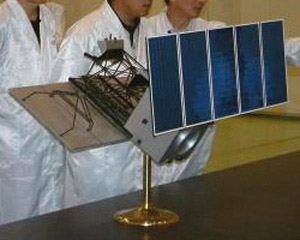The US Department of Defense (DoD) has said that there is still no valid business case for buying two different engines for the F-35 Lightning II Joint Strike Fighter, despite concerns raised by lawmakers and a new government audit indicating potential benefits.
 The US Government Accountability Office (GAO) reiterated in 24 March congressional testimony that buying both the Pratt & Whitney F135 and General Electric (GE) Rolls-Royce F136 engines may prove financially feasible and also provide non-financial benefits, such as better contractor responsiveness.
The US Government Accountability Office (GAO) reiterated in 24 March congressional testimony that buying both the Pratt & Whitney F135 and General Electric (GE) Rolls-Royce F136 engines may prove financially feasible and also provide non-financial benefits, such as better contractor responsiveness.
The F135 engine with lift fan, roll posts, and rear vectoring nozzle,
as designed for the F-35B, at the Paris Air Show, 2007
The costs of opening two separate production lines "could be recouped if competition were to generate approximately 10.1 to 12.6 per cent savings over the life of the programme", Michael Sullivan, the GAO's director of acquisition and sourcing management, said in written testimony submitted to the House Armed Services subcommittees on Air and Land Forces and Seapower and Expeditionary Forces.
However, Ashton Carter, the Pentagon's top acquisition official, said the DoD remains opposed to buying two engines; while acknowledging that competition may drive down costs in the long-term, he insisted the short-term costs are too high.
Source by : Jane's Defence
 The US Government Accountability Office (GAO) reiterated in 24 March congressional testimony that buying both the Pratt & Whitney F135 and General Electric (GE) Rolls-Royce F136 engines may prove financially feasible and also provide non-financial benefits, such as better contractor responsiveness.
The US Government Accountability Office (GAO) reiterated in 24 March congressional testimony that buying both the Pratt & Whitney F135 and General Electric (GE) Rolls-Royce F136 engines may prove financially feasible and also provide non-financial benefits, such as better contractor responsiveness.The F135 engine with lift fan, roll posts, and rear vectoring nozzle,
as designed for the F-35B, at the Paris Air Show, 2007
The costs of opening two separate production lines "could be recouped if competition were to generate approximately 10.1 to 12.6 per cent savings over the life of the programme", Michael Sullivan, the GAO's director of acquisition and sourcing management, said in written testimony submitted to the House Armed Services subcommittees on Air and Land Forces and Seapower and Expeditionary Forces.
However, Ashton Carter, the Pentagon's top acquisition official, said the DoD remains opposed to buying two engines; while acknowledging that competition may drive down costs in the long-term, he insisted the short-term costs are too high.
Source by : Jane's Defence

.PNG)








